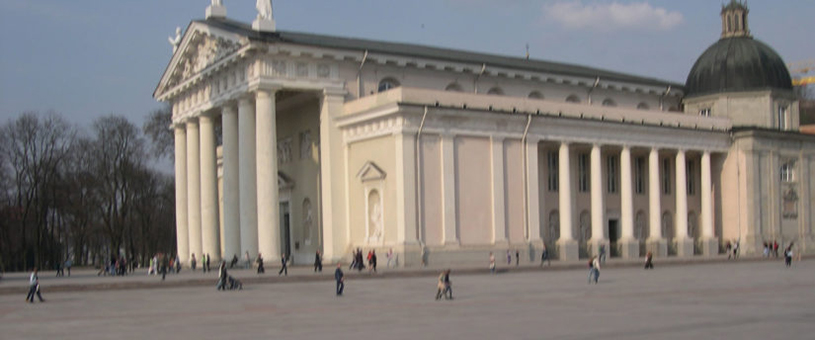THE BALTICS BECAME INDEPENDENT REPUBLICS following the collapse of Czarist Russia and the national independence movements associated with the Treaty of Versailles after World War I. Lithuania, Latvia, and Estonia, subject to Czarist rule since the end of the 18th Century but much against their national wills, maintained their independence until the late 1930s. The Soviet government of Joseph Stalin maintained more or less correct relations with the Baltics until shortly before the beginning of World War II. At that point Stalin began making provocative statements and actions, obviously intending to pick an unfair fight between the Soviets and the Baltics. The plan was concretized, although secretly, when Germany and the Soviets signed their mutual non-aggression pact in 1939. In secret protocols of this pact, known as the Molotov-von Ribbentrop Pact, they agreed to divide Eastern Europe between Hitler and Stalin. Hitler got Poland, western Ukraine, and Moldova, and Stalin got the Baltic Republics.
A few days later, on September 1, 1939, Hitler invaded Poland starting World War II, and Stalin began pressuring the Baltic republics to allow the stationing of small numbers of Soviet troops in their countries, which they did. These troops and the Soviet secret police that came with them began reading the ground for the full-scale occupation that occurred months later—making lists of the people to be arrested and readied the ground for a total re-make of a democratic state into a puppet state effectively ruled from Moscow.
After the pact was signed but before Hitler invaded Russia Stalin issued a few ultimata to the Baltic states as a way to begin taking over but without a formal invasion. He that they arrest supposedly anti-Soviet leaders and allow the Soviets to station troops in strategic spots in their countries, supposedly for self-protection. Latvia acquiesced, Lithuania demurred, and Stalin upped the pressure. With Soviet tanks then moved to the border the Lithuanians also then agreed, and in 1940 Soviet troops entered. Their secret police began quietly arresting leadership people, and on the night of June 14, 1941 they initiated a massive deportation of teachers, doctors, military, government people, clergy, business leaders and farmers, and anyone judged to have public standing. One out of every one hundred people, men, women and children, were arrested and deported.
The deportations were enacted in accord with a detailed plan, drawn up by the security forces in Moscow. It was called Order 001224.
Here what we have are documentary films where the victims of these deportations, imprisonments, and daily terror tell their own stories.
